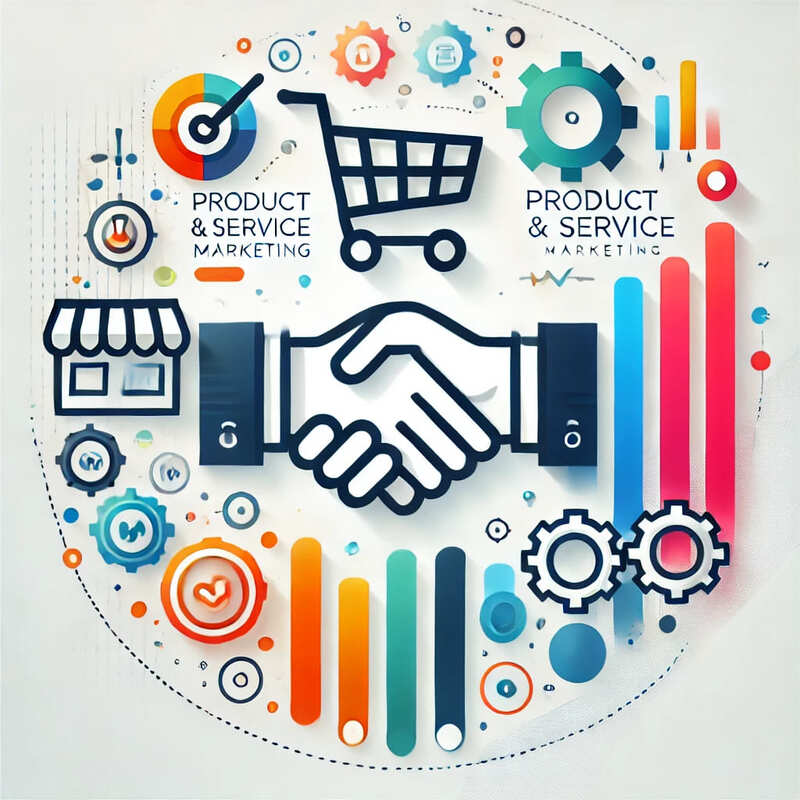Introduction
In the ever-evolving landscape of business, understanding the nuances between product and service marketing is crucial. While both aim to drive demand and customer engagement, the strategies and tactics can differ significantly. This guide will delve into the world of product and service marketing, offering insights, strategies, and best practices to effectively market both types of offerings.
What is Product and Service Marketing?
Product marketing focuses on tangible goods, emphasizing features, benefits, and the problems they solve. Service marketing, on the other hand, promotes intangible experiences and emphasizes the process of service delivery, customer experience, and relationship building. Despite these differences, both aim to identify the right customers, understand their needs, and develop a marketing strategy that addresses those needs.
Core Principles of Product and Service Marketing
- Market Research: Understanding your market is the first step, whether you’re marketing a product or a service. This involves identifying target customers, understanding their needs and pain points, and analyzing competitors. For services, this may also involve understanding the customer journey and touchpoints more deeply.
- Product/Service Positioning: For products, positioning often revolves around features, benefits, and USPs (Unique Selling Propositions). For services, positioning may focus more on expertise, customer experience, and the quality of the service delivery.
- Go-to-Market Strategy: This outlines your action plan for launching your offering. For products, this may involve distribution channels, pricing strategies, and promotional activities. For services, the emphasis may be on relationship-building strategies, customer engagement, and long-term contracts.
- Launch Planning and Rollout: Both products and services require meticulous planning for launch. However, while product launches may be one-time events with a focus on the first impression, service launches may be ongoing and iterative, continually refined based on customer feedback.
- Sales Enablement: Whether it’s a product or a service, your sales team needs the right tools and training to sell effectively. This could include sales scripts, demo strategies, and objection-handling techniques tailored to what you’re offering.
- Customer Retention: For products, customer retention might involve warranties, customer service, and upselling. In services, retention is often about relationship management, customer satisfaction, and providing ongoing value.
- Feedback Loop and Continuous Improvement: Both types of marketing benefit from a strong feedback loop. For products, this could mean product improvements; for services, this could mean refining service delivery or customer experience based on feedback.
- Performance Metrics: KPIs like Customer Acquisition Cost (CAC), Customer Lifetime Value (CLV), and Net Promoter Score (NPS) are important for both but may be weighted differently depending on whether you’re marketing a product or a service.
- Pricing Strategies: While product pricing may be straightforward, service pricing often involves variables like time, complexity, and customization. Both should align with the offering’s perceived value to the customer.
The 7 P’s in Product and Service Marketing
The 7 P’s of marketing—Product, Price, Place, Promotion, People, Process, and Physical Evidence—take on nuanced roles in product and service marketing:
- Product/Service: The tangible or intangible offering you provide.
- Price: Your pricing strategy, which may involve different complexities for services.
- Place: Where and how the customer will access your product or service.
- Promotion: The marketing and advertising activities you undertake.
- People: The team responsible for creating, selling, and delivering the product or service.
- Process: Especially crucial in services, this is how the service is delivered.
- Physical Evidence: For services, this could be the environment in which the service is delivered, or any tangible elements like reports or deliverables that come out of the service.
Key Takeaways and Action Items
- Understand the unique marketing needs of your product or service.
- Develop a strong positioning statement tailored to your offering.
- Create a comprehensive go-to-market strategy.
- Equip your sales team with the tools they need.
- Focus on customer retention and feedback for continuous improvement.
Conclusion
Product and service marketing, while sharing some core principles, require different approaches and strategies. By understanding these nuances and applying the right tactics, you can create a compelling, successful offering that meets and exceeds customer expectations.



